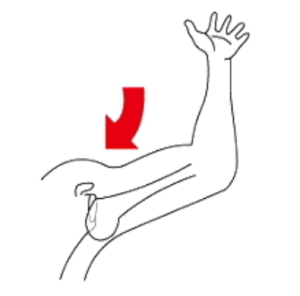Shoulder dislocation
Shoulder dislocation is a condition in which the humeral head of the shoulder joint dislocates from the glenoid cavity.
Symptoms

Symptoms of shoulder dislocation: It occurs when one falls and lands on their hand or hits the shoulder hard. In severe cases, the humerus at the tip of the acromioclavicular joint may fracture. As one of the most prone-to-dislocation joints, it commonly happens during various sports activities. The arm dangles loosely and becomes immovable.
Why does it hurt?
Because the humeral head is not properly seated within the joint, normal movement is impaired.
Treatment
Reduction of dislocation: Prompt reduction is necessary to avoid difficulties and prevent potential nerve paralysis.
Medication: It is essential to suppress inflammation caused by the dislocation.
Physical therapy: Strengthening the muscles around the scapula, rotator cuff, and torso is recommended.
Surgery: For recurrent shoulder dislocations or persistent instability, surgical intervention may be required for complete treatment. The Bristow procedure and arthroscopic Bankart repair are representative surgical methods.
Shoulder Diseases

We provide explanations for various shoulder conditions. Please use this as a general guide to determine which condition may apply to you.
- Common shoulder injuries by age group
- To those who neither have frozen shoulder nor rotator cuff tears
- Throwing Shoulder Disorder
- Rotator Cuff Tears and Rotator Cuff Injuries
- Recurrent Shoulder Dislocation
- Frozen Shoulder
- Shoulder Dislocation
- Acromioclavicular Joint Dislocation
- Chronic Acromioclavicular Joint Dislocation
- Frozen Shoulder
- Calcific Tendinitis of the Rotator Cuff
- Primary Degenerative Shoulder Arthritis
- Rotator Cuff Tear-related Degenerative Shoulder Arthritis
- Non-traumatic Shoulder Instability
- Biceps Tendon Injuries
- Surgical Trends for Throwing Shoulder in Baseball Players
